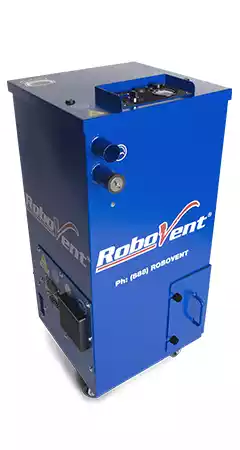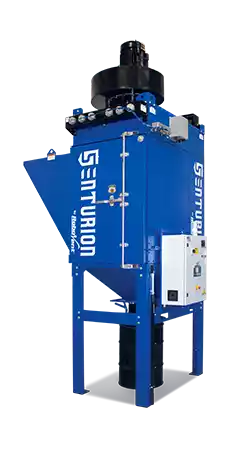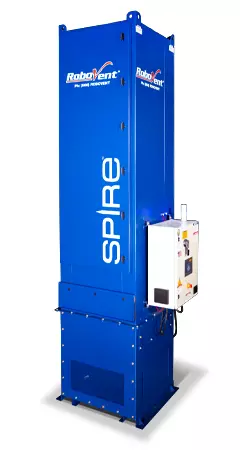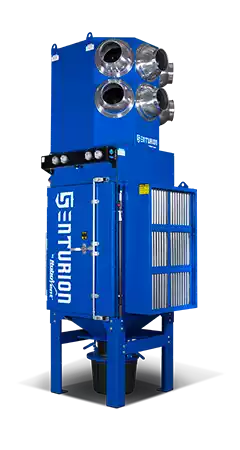Guide to Cartridge Dust Collectors: What to Know Before You Buy
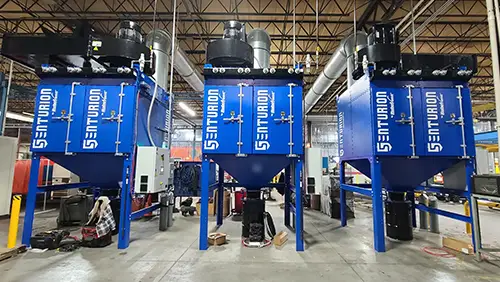 Cartridge dust collectors are widely used across industries to protect workers and facilities from dangerous dust and fumes. They offer significant advantages in most environments against alternatives such as baghouse or cyclone dust collectors. Why choose a cartridge-style dust collector, and what should you look for when buying? Our guide has all the details.
Cartridge dust collectors are widely used across industries to protect workers and facilities from dangerous dust and fumes. They offer significant advantages in most environments against alternatives such as baghouse or cyclone dust collectors. Why choose a cartridge-style dust collector, and what should you look for when buying? Our guide has all the details.
What Is a Cartridge Dust Collector?
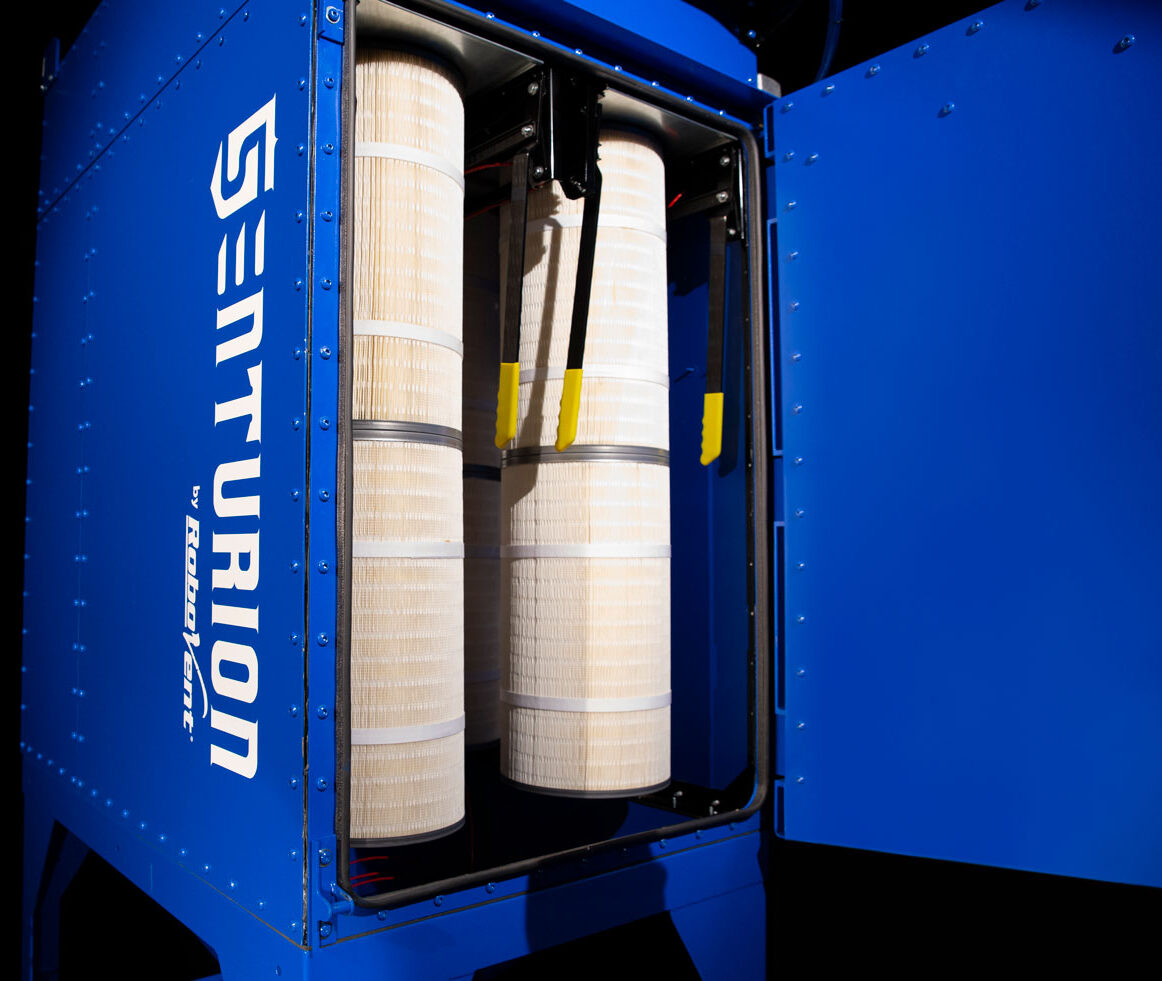 A cartridge dust collector is a high-efficiency industrial air filtration system specifically designed to clean the air by removing particulate matter and dust from the environment. This system uses disposable, pleated cartridges as its primary filter media. Due to their high energy efficiency, smaller size, versatility and filtration efficiency, cartridge collectors are now preferred for a wide range of industrial and manufacturing applications.
A cartridge dust collector is a high-efficiency industrial air filtration system specifically designed to clean the air by removing particulate matter and dust from the environment. This system uses disposable, pleated cartridges as its primary filter media. Due to their high energy efficiency, smaller size, versatility and filtration efficiency, cartridge collectors are now preferred for a wide range of industrial and manufacturing applications.
Cartridge dust collectors operate by drawing air in through a cylindrical air filter cartridge that captures and separates the dust particles from the air stream. The filtered air is then exhausted, and the dust collected on the exterior of the cartridge is typically removed using a compressed air pulse-jet cleaning system.
Cartridge Dust Collector Types and Configurations
Cartridge dust collectors come in a wide range of sizes and types for different applications. Cartridge dust collectors can be used in a variety of industrial air filtration configurations, including traditional ducted source capture or ambient air filtration.
- Portable cartridge collectors, like the RoboVent ProCube II, are designed for high mobility. They are perfect for applications like manual welding using MIG fume guns.
- A large cartridge collector, like RoboVent Senturion, can be ducted to multiple production cells throughout the facility for a centralized dust collection solution. (The collector is often located outdoors in this scenario.)
- Alternatively, smaller individual cartridge collectors, such as the RoboVent Spire unit, can be placed on the factory floor and ducted directly to an individual cell.
- Some cartridge dust collectors can be configured with specialized intake and exhaust plenums for ductless ambient air filtration.
Cartridge vs. Baghouse Dust Collectors
Cartridge dust collectors are often contrasted with baghouse collectors, which use long fabric bags as the filter medium.
- Baghouse collectors are especially effective for larger, coarser dust particles and very large-scale applications requiring extremely high airflow and generating very heavy dust loads. They are also often used for applications generating very high air stream temperatures, such as foundries or cement manufacturing. They are, however, generally larger and require more space than cartridge dust collectors of similar airflow.
- Cartridge dust collectors are known for their compact design, allowing them to fit into smaller spaces. Their pleated filters provide a larger surface area for filtration, offering higher filtration efficiency compared to baghouse systems. Filters are easier to replace, too. Cartridge collectors are also more energy efficient for all but the very highest airflow applications. They are particularly effective for capturing fine, fibrous, and heavy dust loads.
Cartridge vs. Cyclone Dust Collectors
Cyclone dust collectors use centrifugal force to separate dust and other particulates from the air. The dirty air enters the cyclone dust collector and is forced into a spiral motion, causing the heavier dust particles to be thrown against the sides of the collector, where they fall into a collection bin.
- Cyclone dust collectors are typically used for larger, coarser dust particles and can be effective in applications where the dust is heavy or abrasive. They are known for their durability and low maintenance, but they usually don’t filter as efficiently as cartridge dust collectors when it comes to smaller dust particles. That means that they may not clean enough dust out of the air to keep exposures under the Permissible Exposure Limits (PELs) set by the Occupational Safety and Health Administration (OSHA). In environments with large loads of heavy, abrasive dust, cyclone collectors are sometimes used as pre-filters before the air enters a cartridge or baghouse dust collector.
- In contrast to cyclone dust collectors, cartridge collectors excel at filtering fine particulate or handling mixed particle sizes. These systems are highly versatile and can be fitted with different types of cartridge air filters to capture even ultrafine dust or submicron particulate. Cartridge dust collectors are the better choice when handling fine particulate or dust and fumes that may be toxic, carcinogenic or hazardous when inhaled. Some cartridge collectors, like Senturion, can also be fitted with integrated dropout boxes and other adaptations for collection of heavy, abrasive dust, eliminating the need for pre-filtering.
Advantages of Cartridge-Style Dust Collectors
Cartridge-style dust collectors have a number of advantages for manufacturing and industrial applications.
- Filtration Efficiency: Cartridge dust collectors are very efficient at capturing dust, particularly small particles. They can have efficiencies of 99% or more for particles in the range of 0.3 - 0.5 microns, depending on the type of filter used.
- Compact Design: The pleated design of cartridge filters allows a large filtration area in a compact size. This makes cartridge dust collectors smaller and lighter than other types of dust collectors with similar airflow capacities, allowing for easier installation and smaller floor space requirements.
- Easy Maintenance: The cartridge filters are typically easy to access and replace, reducing downtime for maintenance.
- Versatility: Cartridge dust collectors can handle a wide range of dust types and particle sizes, and they come in various sizes and configurations.
- Customizability: There are many options for filter cartridges, including different types of filter media, coatings, and treatments, allowing the system to be tailored to the specific needs of the application.
- Energy Efficiency: Many cartridge dust collectors are designed for energy efficiency. The compact design can reduce energy consumption compared to other types of dust collectors.
- Noise Reduction: Due to their enclosed design, cartridge dust collectors can often operate with less noise than other dust collection systems.
Common Applications for Cartridge Dust Collectors
Cartridge dust collectors are commonly used in a wide range of industries and applications such as metalworking, woodworking, pharmaceutical, chemical, food processing, and more—wherever dust and fumes are generated as a by-product of operations and it is essential to maintain air quality and safety standards. They are especially beneficial in environments that require higher-efficiency filtration and continuous airflow for dust collection.
Cartridge collectors are highly versatile and can be configured for virtually any airflow requirements, from small units of 1,000 Cubic Feet per Minute (CFM) or less to massive units of 100,000 CFM or more. Size is limited mainly by space consideration and the size of the ductwork required. They can handle a moderate to high dust load. Some of the most common applications for cartridge dust collectors include:
- Welding
- Metalworking, machining and general fabrication (including laser and plasma cutting, grinding, surface finishing, etc.)
- Food processing
- Plastic and rubber manufacturing
- Woodworking
- Pharmaceuticals
- Chemical manufacturing (powder & bulk applications)
- Electronics manufacturing
- Battery manufacturing
- Mining and mineral processing
- Bin venting
- Recycling
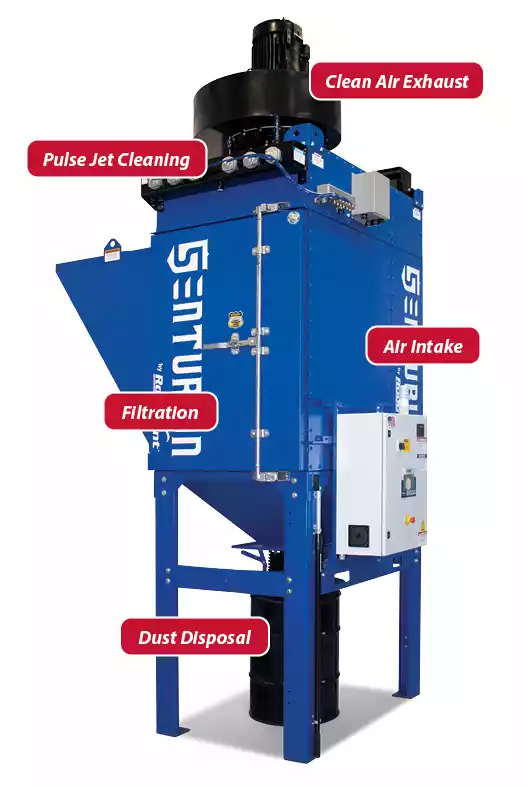 How Does a Cartridge Dust Collector Work?
How Does a Cartridge Dust Collector Work?
A cartridge dust collector is a type of air pollution control device that helps to keep the air in workplaces clean by removing harmful particulates and dust. It uses a filtration system to clean the air before it’s released back into the environment. Here’s a general overview of how it works:
- Air Intake: Dust-laden air from the workplace is drawn into the dust collector through an intake. This is typically done using a fan or blower system located after the filter chamber to pull air through the filters.
- Filtration: The dirty air then passes through the filter cartridges. These cartridges are typically made of a pleated, non-woven, porous fabric and are designed to allow air to pass through while capturing dust particles.
- Clean Air Exhaust: The filtered clean air is then exhausted out of the dust collector and back into the workspace or outside environment.
- Pulse-Jet Cleaning: To clean the filters and maintain their performance, most cartridge dust collectors use a pulse-jet cleaning system. This system uses short, high-pressure bursts of air (pulses) to dislodge dust from the filters. The dust then falls into a collection hopper for easy disposal.
- Dust Disposal: The collected dust in the hopper needs to be periodically emptied to prevent overfilling and to maintain the efficiency of the dust collection system. This can sometimes be done without interrupting the dust collection process.
Considerations in Choosing a Cartridge Dust Collector
Cartridge dust collectors are a versatile and highly customizable solution for a wide range of industrial dust collection needs. They are available in a variety of sizes, cartridge configurations, and filter media types. Cartridge collectors also offer a broad selection of additional features and options, such as inlet styles and safety features, allowing you to customize the system according to your specific requirements.
Dust Collector Sizing
Cartridge dust collector sizing comes down to two elements.
- How much airflow (in Cubic Feet per Minute, or CFM) can the system generate? CFM requirements will depend on the volume of air that must be cleaned and the required capture velocities for the type and volume of dust produced.
- How much filter media does the duct collector have relative to the airflow? This is known as the air-to-cloth ratio or filtration velocity.
Filter Selection
Cartridge dust collector filters come in a range of styles, media types, filtration efficiencies, and coating options to accommodate a variety of different dust types and loads. Filter choice depends on dust characteristics such as particle size, moisture or oil content, static risks, stickiness, abrasiveness, and other variables.
- Most dust collector cartridge filters are rated by Minimum Efficiency Reporting Value (MERV). A higher MERV rating indicates the media can filter out smaller particles more efficiently. Most dust collector cartridge filters are rated between MERV 11 and MERV 16 (though all cartridge filters will approach a MERV 16 rating once they build up a dust cake on the surface). Some cartridge collectors can also be fitted with a HEPA after filter to remove the smallest sub-micron particles. Smaller particles and more dangerous dust will require filters with higher filtration efficiency.
- Cartridge filters may be made of cellulose, spunbond polyester, or blended filter media. There are also options for special features and coatings, such as nanofiber layers for higher filtration efficiency, PTFE coatings for better dust shedding and chemical resistance, hydro- or oleophobic properties for repelling water and oil, and anti-static properties.
- High-quality cartridge filters are made of sturdy materials and have a pleat design that allows for efficient filter cleaning and optimal availability of filter media for filtration. Look for filters with consistent pleat spacing and sturdy pleat construction.
Filter Protection
For maximum cartridge air filter life, look for dust collectors with these features.
- The cartridge collector will usually be equipped with a filter pulsing mechanism which uses pulses of compressed air to clean excess dust off the filters. Filter pulsing extends filter life and increases the efficiency of the collector. Look for a dust collector with a pulsing mechanism that cleans the entire length of the filter.
- Vertical orientation of the filter cartridges allows for more efficient dust pulsing.
- When dealing with heavy or abrasive dust, cartridge collectors may be equipped with abrasion-resistant intakes, dropout boxes, or baffle systems to protect the filters.
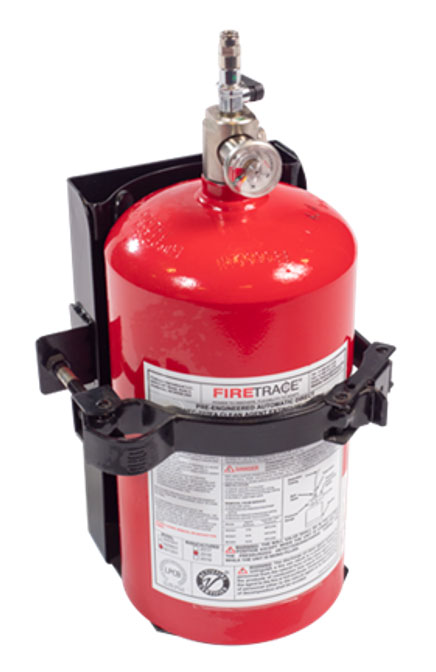 Fire & Explosion Safety
Fire & Explosion Safety
Safety features for cartridge dust collectors will depend on the type of dust that is collected.
- All cartridge-style dust collectors should be equipped with basic fire safety elements, such as a fire/smoke detector that will set off an alarm and turn off the motor if a fire is detected. There should also be a fire suppression system, which may be a basic water sprinkler system, carbon dioxide gas, or a clean-agent gas system.
- If dust is combustible, the system must be equipped with a National Fire Protection Association (NFPA)-compliant deflagration system. This may include explosion venting, isolation valves to prevent pressure waves from returning backward into the facility, and a rotary airlock to prevent dust from escaping the collection bin.
- If sparks are produced near the dust collector intake, a spark arrestor should be used to prevent sparks from entering the filter chamber.
Maintenance Requirements
Consider the ease and frequency of maintenance tasks, such as filter replacement and dust disposal. Cartridge filters are generally easier to replace than other types of filters, and some dust collectors have features that allow dust disposal without interrupting operation. For example, the Snap-Lock filter clamp allows for fast filter changes with no tools required. Also consider upgrading from a standard dust tray to a larger bin, barrel or 55-gallon drum for dust collection to extend the time between emptying.
Energy Efficiency
Check the energy requirements of the dust collector. Some models are designed for energy efficiency, which can lead to cost savings in the long run. Features like an automatic variable frequency drive (VFD) motor, which adjusts the motor speed to compensate for filter loading, can decrease energy use by 20-40%.
Noise Level
Depending on the working environment, the noise level of the dust collector might be an important consideration. Some models are designed to operate more quietly than others. Some cartridge-style dust collectors have optional acoustical attenuation (e.g., stack silencers), which can decrease the perceived noise level for the unit by about 50%.
Cost
Of course, cost is an important consideration when selecting a cartridge dust collector. Be sure to consider both the initial purchase price and the total cost of ownership, which includes the cost of replacement filters, energy use, and maintenance over the life of the dust collector. Dust collector costs can be minimized by:
- Sizing the dust collector appropriately in terms of airflow (CFM), horsepower (HP), and air-to-cloth ratio so you’re not buying a bigger collector than you need.
- Looking for energy-saving features like a VFD motor.
- Choosing the right filters for your application.
- Maintaining the dust collector unit according to factory specifications.
Maintaining a Cartridge Dust Collector
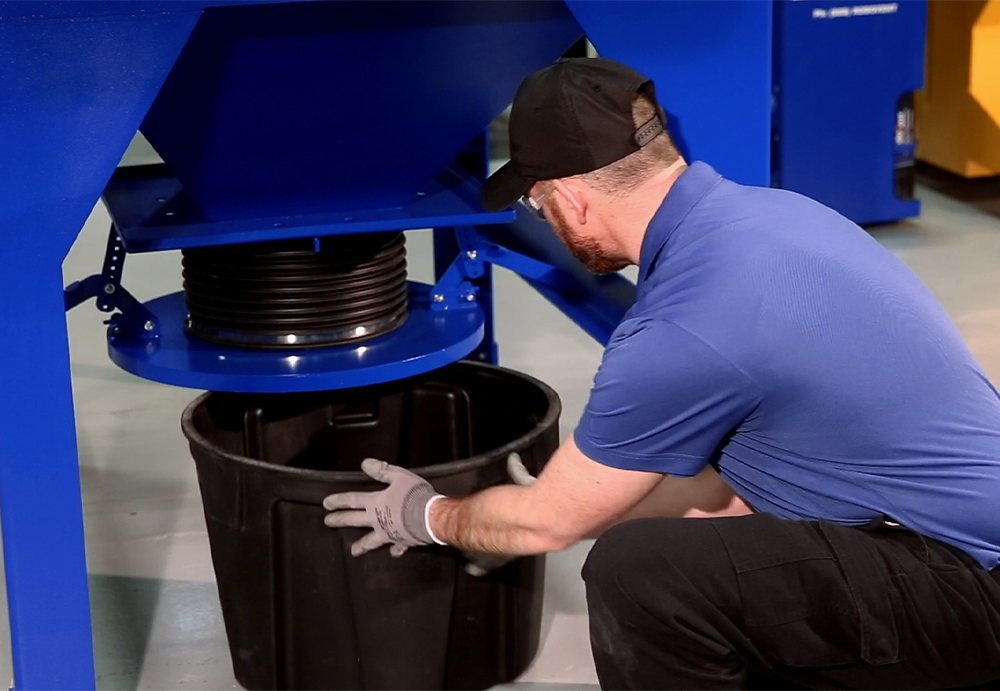 Regular preventive maintenance is crucial to keep a cartridge dust collector running efficiently and effectively. Here’s what typical maintenance for a cartridge dust collector may involve.
Regular preventive maintenance is crucial to keep a cartridge dust collector running efficiently and effectively. Here’s what typical maintenance for a cartridge dust collector may involve.
- Filter Inspection and Replacement: Regularly inspect cartridge air filters for signs of wear or damage and replace them as necessary. The frequency of filter replacement will depend on the type of dust, the dust load, and the specific operation. Monitoring pressure drop across the filters can help to identify the best maintenance intervals.
- Cleaning System Check: If your system uses a pulse-jet cleaning system, check it regularly to ensure it’s working properly. This includes inspecting the solenoid valves, diaphragm valves, and compressed air supply.
- Dust Disposal: Empty the dust collection hopper regularly. Make sure to follow all safety regulations and guidelines for dust disposal, particularly if you’re dealing with hazardous or combustible dust. A bin level sensor can be used to alert operators when the bin or barrel is full.
- Ductwork Inspection: Check the ductwork for leaks, blockages, or signs of wear. Leaks can reduce the system’s dust collection efficiency, while blockages can cause increased pressure drop and energy use.
- System Performance Monitoring: Keep an eye on key system performance indicators, such as pressure drop across the filters, airflow rate, and dust emissions. Changes in these parameters can indicate potential issues that need to be addressed.
- Safety Checks: Regularly check all safety devices, such as explosion vents, spark arrestors, or fire suppression systems, to ensure they are in good working condition.
While some maintenance tasks can be performed by your own personnel, others may require service by a trained professional. Always follow the manufacturer’s recommendations for maintenance procedures and schedules.
Designing a Cartridge Dust Collection System
Cartridge dust collector selection should be considered in the context of overall dust collection system design and engineering. A qualified engineering partner can help you choose the right dust collector and collector configuration, size the system properly for your application, and install it correctly. A well-engineered dust collection system will help your facility reduce operating and energy costs while ensuring compliance with OSHA PELs and other safety standards. Cartridge-style dust collectors are an important element in creating a safe, healthy and comfortable working environment.
RoboVent Senturion is our flagship full-size cartridge dust collector. Versatile and modular, Senturian can be configured for practically any industrial air filtration application, from weld fume extraction to heavy powder & bulk dust collection.
See our full cartridge collector line-up or talk to a RoboVent Solution Specialist today.
Contact Us With Your Questions!
SUBSCRIBE TO
BLOG UPDATES


